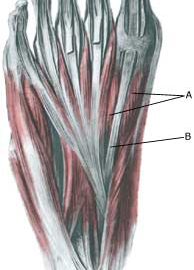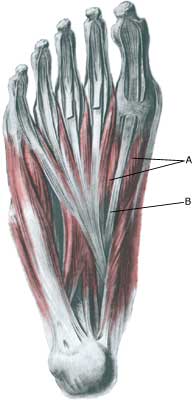|
||
|
||
| Cause: The stiffness is due to an irritation in the flexing tendons under the toe (M flexor hallucis). It occurs with repeated overloading of the flexing tendons (jumping, handball).
Symptoms: Pain in the metatarsophalangeal toe joint when walking. The pain is aggravated when the big toe is flexed backwards (extension). Often seen in girls in the 14-18 year age group. Examination: Medical examination is not necessarily required in slight cases with minimal tenderness and no discomfort when walking. Examination is required in cases of more pronounced pain in order to confirm the diagnosis. The examination will show that the big toe can not be flexed upwards (extension), when the ankle joint is flexed 90 degrees, whilst the big toe can flex upwards when the ankle joint is stretched (flexion). In some instances it will be necessary to perform an x-ray or ultrasound scan, possibly supplemented with MRI examination (article). Treatment: Treatment comprises relief with the aid of shoes with stiff soles (article). The treatment can be combined with rheumatic medicine (NSAID) (gel or crème). Furthermore, increased mobility of the joint is aimed at by active and passive movement of the big toe (hallux) within the pain threshold. Operations have been attempted, but have not yielded satisfactory results (article). Rehabilitation: Load or strain within the pain threshold is allowed. Shoes with stiff soles are recommended. The guidelines under rehabilitation, general should be followed. Passive and active movement of the big toe within the pain barrier. Bandage: Taping which supports the metatarsophalangeal toe joint can be used to reduce the pain from sports activity and walking (tape-instruction). If this is not sufficient, special soles can be manufactured to support the big toe. Complications: If there is not a steady improvement in the condition, medical assistance should be sought to determine whether the diagnosis is correct or whether complications have arisen: |


